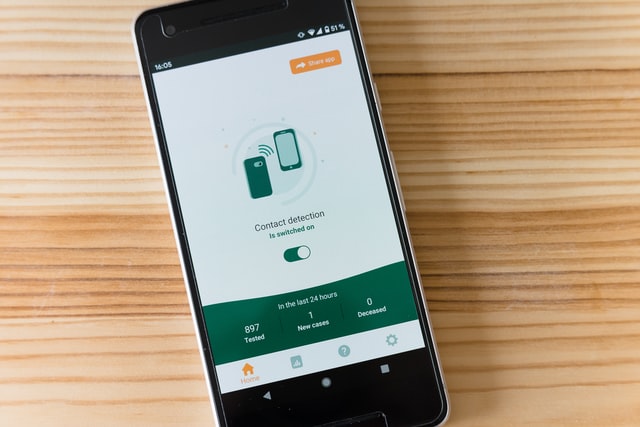To begin, what is mobile security? Mobile security is anything that is programmed to protect devices, such as smartphones and tablets, and networks from threats and vulnerabilities. This has become a problem as technology becomes more developed because the more accessible and reliable the internet becomes, the more likely of the chance of threats accessing personal data. Cybercriminals are always present, targeting devices unprotected from malicious software and other threats. Even more so, gaining access to unauthorized data may disrupt the overall function of society, organization, and businesses that rely on the trust from their customers. Practicing mobile security prevents stolen sensitive information or ransomware attacks.
There are multiple different types of mobile device security that can be used to ensure safety of a device. Mobile device security with enterprise mobility management and often involves MDM capabilities. Implementing Enterprise Mobile Strategy, with mobile device management (MDM) solution, allows access to devices, ensures data security, and secure access on devices. MDM should be able to support all devices, simple but effective, and allow remote maintenance. In terms of security concerns, MDM requires password protection of databases and data encryption, ability to authorize blocked devices, lock devices, locating devices, and option of deleting data in case of unauthorized access to devices.
Of course, MDM is always evolving and improving its qualities to avoid digital threats are continuously improving itself to eventually develop immunity to mobile device security.
Another type of mobile device security often implemented is through other security appliances such as VPNs and antimalware programs. VPN, a virtual private network, establishes an encrypted connection from a device and the Internet to ensure security and privacy when connecting to public networks. When using VPN, the device is rerouted to a proxy server and the IP address associated with the questioned device would be masked. This process helps to hide the identity and location of the device from hackers while accessing the Web. Similarly, antimalware is used to protect information technology systems and devices from malware. It is also possible through the use of email security applications to block phishing attacks and endpoint protection tools to monitor malicious behavior.
An example of an anti-malware application is Eset. Eset is a company that produces applications to provide a level of security and support to devices. It provides services to Android devices which includes: antivirus protection from cybersecurity threats, application security and verifications through pin or fingerprint, proactive anti-theft programs that assists in finding lost or stolen devices and protecting data interception.
Confirming malware popups on android devices
There is a possibility of malware presence on an android device if the device experienced symptoms such as overheating, increased battery drainage, constant pop-up ads or personal ads, slow performance, problems with applications or unacknowledged applications, increase in phone bills, or increased data usage. However, it is especially important to note when the device has not been updating or receiving updates. In the case that the device experiences one or more of the problems stated, it is important to follow the preceding steps to check for malware on Android devices.
- Open the Google Play Store application
- Open the menu button with the three-line icon on the top corner of the screen.
- Select Play Protect.
- Choose “Scan” to allow checking for malware.
- Once completed, the device will indicate applications that should be removed, which have been causing harm to the device.
- If not already, set up automated scanning to ensure the device is constantly checking by clicking the gear icon in the “Play Protect” panel and ensuring both sliders are green.
Cleaning android mobile phones
To ridden of viruses and malware on an Android device, it is important to follow the following procedures:
- Reboot in safe mode - This will turn off all third-party applications including applications with malware.
- Uninstall suspicion applications. These applications would include recently installed applications, applications that are not frequently used, or applications that the user does not recall installing.
- Remove pop-up ads and redirects from browsers. This action will reset mobile browsers to default settings.
- Clear downloads and cache. This includes files downloaded from the Internet.
- Install mobile anti-malware application on the Android device.
Compare cleaning process of Android vs. iPhone
Similar to an Android device, to clean an iPhone of viruses, the following action(s) should be preceded if necessary: clearing browsing history, restart phone, update to newest iOS version, restore to backup, factory reset on phone, install an iOS security app. While it is necessary to avoid completely restarting an Android device since the device would save the memory of everything in the phone, it is not necessary for Apple devices. All necessary storage, unless decided to be excluded, is stored on iCloud. Therefore, no matter how many times the device shuts down or restarts, all the previous applications and devices would still remain the same upon entering the same iCloud. iPhones mostly require deleting any signs of the viruses while Android only requires removing the infected application that would have likely caused the malware or virus on the device. Both devices are equally as likely to be a target for cybercriminals, it is recommended to only download applications from third party app stores.
Sources
https://www.techtarget.com/whatis/definition/mobile-security
https://blog.cortado.com/mdm-features-manage-mobile-devices/
https://www.avast.com/c-what-is-a-vpn.
https://cybernews.com/malware/how-to-stop-pop-up-ads-on-android/
https://www.techtarget.com/searchsecurity/definition/antimalware.
https://clario.co/blog/how-to-remove-malware-from-android/
https://us.norton.com/internetsecurity-mobile-android-vs-ios-which-is-more-secure.html
https://www.avg.com/en/signal/remove-phone-virus
https://www.eset.com/me/home/mobile-security-android/





